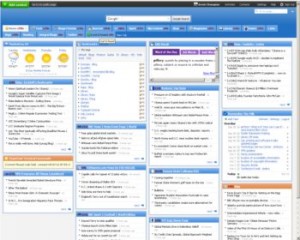RSS is one of the single most important technologies to spur on Web 2.0. RSS stands for Really Simple Syndication. What it does is exactly that — it syndicates (publishes) content, so that instead of you going to the content, the content can come to you. Because of this, it’s a real paradigm shift for navigating the Internet. Consequently, creating a structure that is RSS-friendly was one of the biggest motivating factors for the new InfoTech Tuesday format.
Unfortunately, RSS is like many other technologies that don’t make any sense until you give it a try. The video below, “RSS in Plain English,” is a good, brief explanation of what RSS is, how to use it, and what it can do for you.
Something the video doesn’t explicitly mention are personal portals. A personal portal works just like a feed reader, but gives you the ability to add widgets to make it an even friendlier “home on the Web”. Some of the most popular portals are Netvibes, iGoogle, and Pageflakes.
InfoTech Tuesday has many different RSS feeds that you can subscribe to. There’s a main feed for subscribing to all articles published on the site. There are also feeds for all the categories, all the tags, and even feeds for each individual author’s articles. (For example, if you like Harvard Townsend’s security articles and nothing else, you can subscribe to just his articles and save yourself the time of filtering out the rest.)
All modern browsers display an RSS icon in the navigation bar if a webpage has an RSS feed on it.
In addition, InfoTech Tuesday uses this icon within pages to designate particular feeds.
